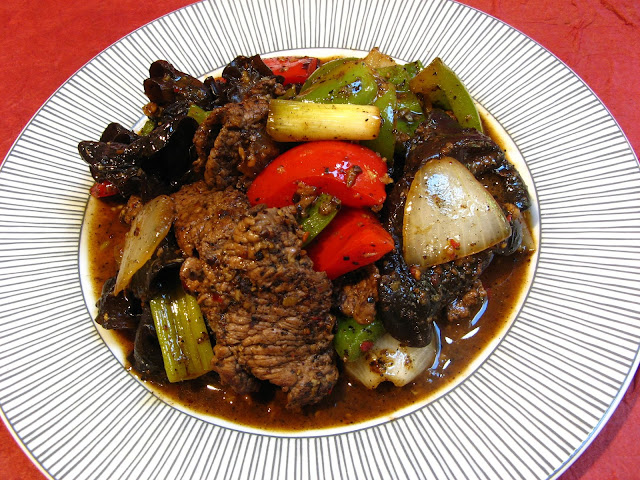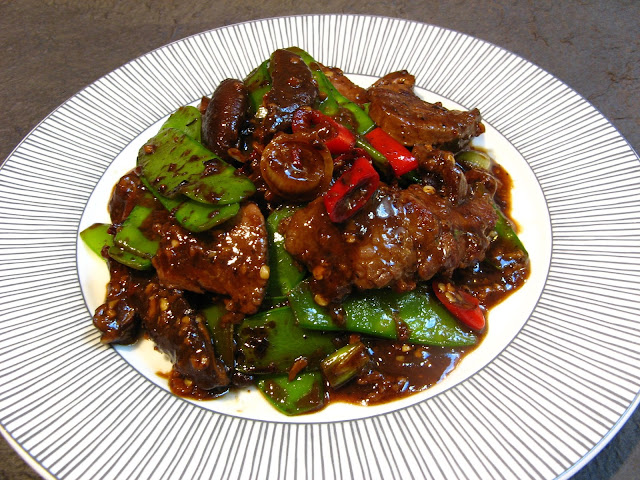Pork stomach is one of my favorite parts of the pig to eat. Pork
stomach or pork tripe differs from beef tripe in that beef tripe is white in
color, while pork tripe is brown. The fresh whole pork stomach needs to be
cooked and sometimes is available already cooked at Asian markets. While it’s convenient
to be able to purchase the cooked version, you need to be careful when buying
since the pork stomach is sometimes undercooked, which results in tough, rather
than tender, pork.
This recipe is really a version of twice cooked pork using
pork stomach, rather than pork belly. My previous recipe, Twice
Cooked Pork with Fish Cake and Fuzzy Melon (節瓜魚片回鍋肉,
Zit3 Gwaa1 Jyu4 Pin3 Wui4
Wo1 Juk6), stir fried thinly sliced pork belly after
it had been boiled. The same technique, using pork stomach instead, is used to
make this dish. Doubanjiang, a spicy fermented broad bean paste, is the basis
for the sauce. Broad beans are fermented with spices and red chilies to produce
this paste. The more famous producers are based in Sichuan Province in the
People’s Republic of China. Broad beans are not soy beans, so soy bean based
pastes does not have the same flavor as Doubanjiang. The Doubanjiang is first
stir fried to bring out the flavor before adding and stir frying with the pork
stomach. The sauce should look dry, so there’s not a lot of liquid.
Enjoy!










